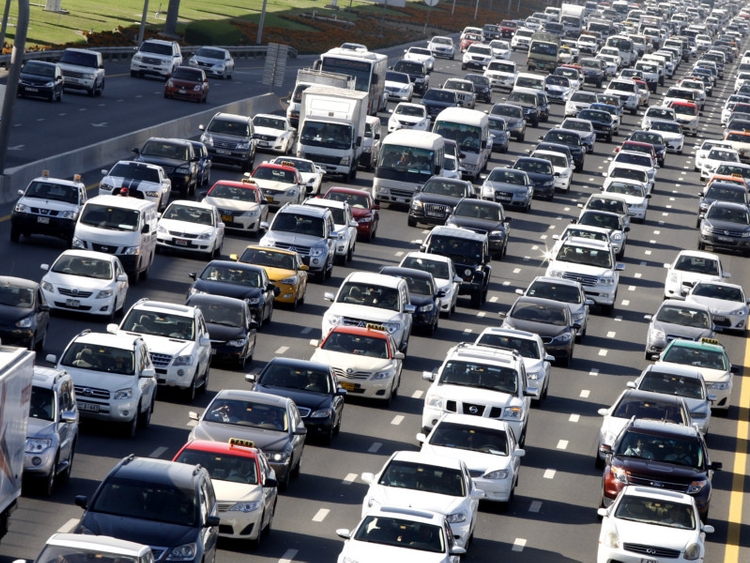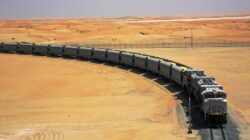UAE first national rail network to ‘transform the economy’ and key role in reducing the carbon footprint
Engineers in the Hajar Mountains between Dubai and Fujairah are making way for 16 Kilometers of tunnel, which will one day see trains shooting through it on a journey that stretches from coast to coast, and even possibly further afield.
The UAE is known for its love of cars as well as its strategic ports and airports, but now is betting big on its first national rail network. The 1,2000-kilometre artery will connect the Gulf of Oman to the Persian Gulf, down through the emirates, into Abu Dhabi’s interior and to Ghuweifat on the border of Saudi Arabia, a key step in a long-mooted rail network crossing the Arabia peninsula.
“The top line implication … is that it has the potential to transform the UAE economy, and not just the UAE, but potentially the GCC [Gulf Cooperation Council],” says Richard Thompson, editorial director of the Middle East Economic Digest.
Going green with sustainable transport
But the move also signals the country’s green ambitions. The UAE has one of the world’s largest footprints per capita, according to the World Bank, and sustainable transport is one way the government plans to reduce it.
The diesel rail line could save 2.2 million metric tons of greenhouse gas emissions per year through its freight capacity alone, says the developer. That’s equivalent to taking 375,000 vehicles off the road and even has the potential to electrify in the future, which would massively benefit the environment by cutting emissions further by using renewable energy.
“I think rail has a huge role to play in helping the UAE reduce its carbon footprint,” says Thompson. “Rail can provide a much more efficient mode of transport for goods and people movement around cities; it can help your cities function better.”
Led by Etihad Rail and funded by the UAE Ministry of Finance and the Abu Dhabi Department of Finance, it has been designed first for freight, and passenger capacity to follow. There is no completion date announced just yet, through “the network is growing as planned” with all contracts awarded, Etihad Rail told CNN.

The network will include links to Jebel Ali Port, Khalifa Port and the Port of Fujairah and industrial hubs in Abu Dhabi, Dubai and Ras Al Khaimah. The route across the UAE, according to Thompson, when connected to an in-progress Saudi network could create a direct link from the Indian Ocean to the Red Sea across the peninsula, bypassing the Straits of Hormuz to the north and the Horn of Africa to the south, with big repercussions for the movement of international cargo.
“You have a more efficient mode of transport, linking ports with each other and removing congestion on the roads and contributing to decarbonization,” he explains.
The executive director of commercial at Etihad Rail, Ahmed Al Musawa, expects 60 million metric tons of freight will move from road and sea to the rail network annually.
Beyond consolidating the UAE’s position as an international transport hub, there will be benefits at a national level too, Al Musawa says. Stage one of the network in Abu Dhabi has transported 33 million metric tons of sulfur since 2016 and has turned the UAE into the world’s largest exporter of the element, he says. Sulfur is used in the manufacturer of everything from fertiliser to paper.
Stage two, which stretches 367 miles began constructions earlier this year, could have even wider benefits.
Kevin Smith, the editor in chief of the International Railway Journal, identifies the railway as a “key strategy … to diversify (the UAE’s) economy slightly away from oil and gas.”
“I think the steel industry, oil and gas industry, then the mining and quarrying industry, should be the main beneficiaries,” says Thompson. “(The network) has the potential to integrate the northern emirate economies much closer into the national economy and accelerate growth and investment in those places.”
Off the roads to the rails?
It’s still unknown how the rail line will change the daily lives of the population. Passenger trains running at 124 miles per hour are touted by Etihad Rail – but no date has been announced. If the network follows through, it could change commuting forever.
“When you have direct, fast access, naturally that does change the way we perceive (distance), or we select where we live or work or study,” Al Musawa says. “The access to materials, services and markets can evolve around such a network.”
But will it convince Emiratis to swap their cars for trains? Thompson says there are some obstacles, including the “last mile problem” — getting people from their homes to train stations.
Walking in the summer sun isn’t an attractive option, but Al Musawa says ride-sharing and “other micro-mobility solutions” may be the answer, adding Etihad Rail is learning from other countries’ experiences.
“I think there’ll be great demand,” Smith argues. “Their whole cities are built around the car, but I think the popularity of the metro (in Dubai) has shown that people will use it if it’s there.”
……………………
FOLLOW US ON SOCIAL MEDIA AND SHARE WTX NEWS WITH YOUR FRIENDS AND FAMILY:
Facebook – Please like our page
Twitter – Twitter updates available in English and Arabic. Please follow us and we would love to hear from you
Instagram – Follow our pages in English and Arabic





